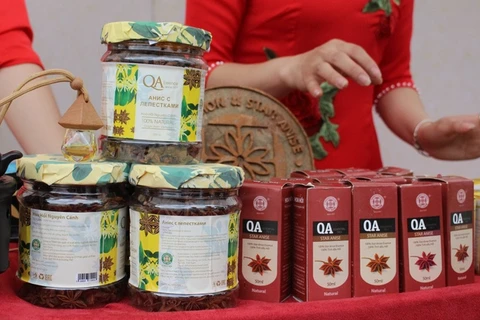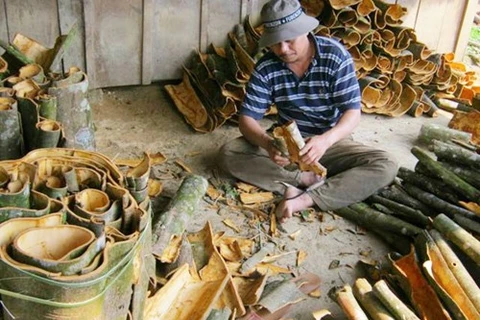 Vietnam has the potential to boost its exports of star anise and cinnamon, but needs supportive policies from the Government.(Photo: VNA)
Vietnam has the potential to boost its exports of star anise and cinnamon, but needs supportive policies from the Government.(Photo: VNA) HCM City (VNS/VNA) - Vietnam has the potential to boost its exports of star anise and cinnamon, but needs supportive policies from the Government, the Lang Son Star Anise Association has said.
Star anise and cinnamon are two non-timber forest species grown in Vietnam for over 100 years.
Cinnamon is mostly grown in Yen Bai, Lao Cai, Ha Giang, Thanh Hoa, and Quang Nam on around 150,000ha, while star anise is planted in Lang Son, Cao Bang and Quang Ninh on 50,000ha, providing a sustainable livelihood for more than 200,000 ethnic minority households, it said.
According to statistics from the World Spice Organisation, globally Vietnam ranks third in cinnamon production and second in star anise production.
The two products are mainly consumed in India, the Middle East, Japan, the Republic of Korea, the US, and the EU, with annual shipments being worth around 400 million USD.
Nguyen Que Anh, chairman of the board and president of the association, said in countries with highly developed processing industries, cinnamon and star anise are the main raw materials in cosmetic and pharmaceutical production.
In particular, shikimic acid is used by pharmaceutical companies to produce Tamiflu, a bird flu medicine.
Anh, who is also chairman of the Vietnam Staraniseed Cassia Manufacturing and Exporting Company Limited (Vina Samex Co Ltd), said his company earned 12 million USD from export of the two products last year, with the main markets being India, Japan, the Republic of Korea, and Europe.
For developing high-quality products, the company has tied up with over 500 farmers and authorities in Yen Bai and Lang Son provinces since 2013 to ensure raw material sources.
Last year it obtained the international organic certificate for over 1,000ha of cinnamon and star anise forests that it has developed together with local farmers, becoming the first company in Vietnam to get the certificate, he said.
“The certificate has helped raise the value of the products twofold.”
There is huge potential to increase cinnamon and star anise exports, he said.
But the industry faces challenges such as a lack of quality seeds and use of old planting, cultivating, harvesting, processing and preservation techniques, he said.
As a result, there is not enough supply to meet the requirements set by demanding markets, he said.
There are more than 600 companies in the spice sector, but most are trading companies who do not care about developing links with growers, he said.
Thus, farmers often face price uncertainty, he said.
Most companies involved in the sector are small or medium-sized, and so do not have the resources to invest in technology and increase their products’ value, he said.
To develop sustainably and further increase the value of cinnamon and star anise products and their exports, the association has asked the Government provide soft loans to ethnic farmers and enterprises, incentives to encourage research into new varieties and transfer of new production and processing technologies.
“The Government should have a master plan for cinnamon and star anise farming so that investors can come up with long-term investment strategies.”
The Ministry of Industry and Trade should help businesses participate in specialised fairs to promote export of the two products to affluent markets.-VNS/VNA
VNA























